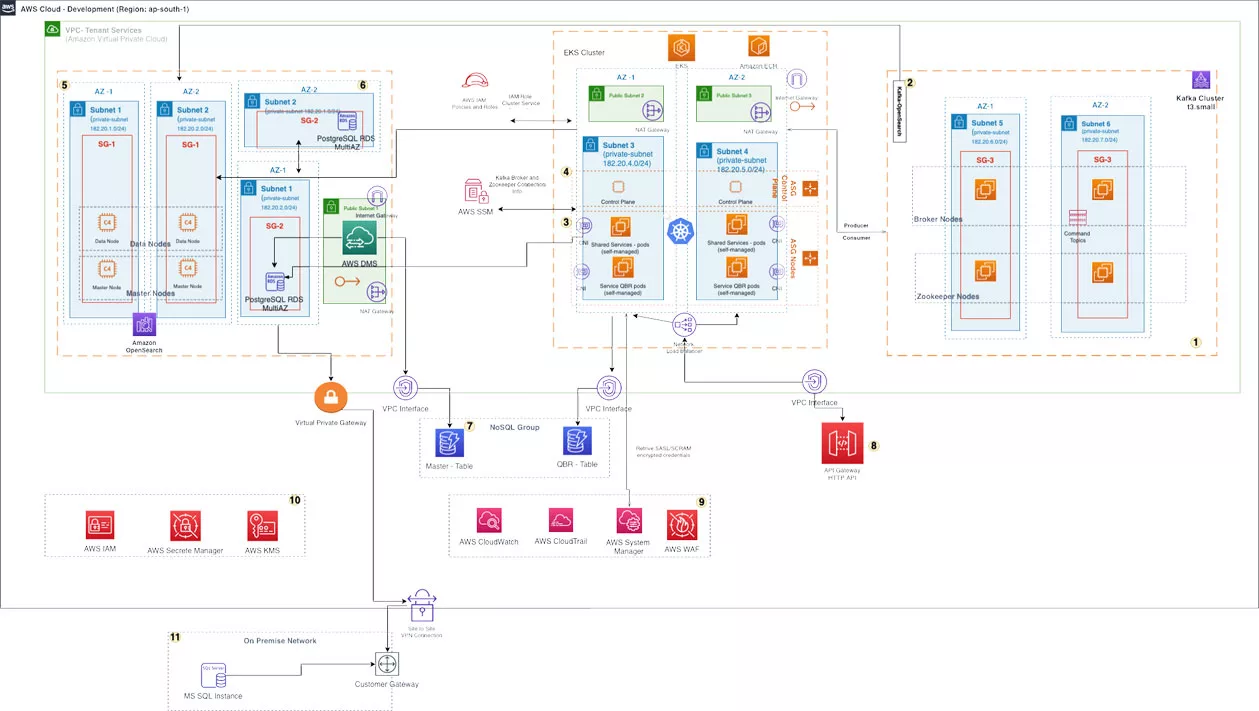Modern businesses are no longer constrained by when and where the work is done. Instead, work is 24/7, interconnected, and highly mobile. With the global ERP software market expected to increase at 10.7% CAGR from 2022 to 2030, it’s a competitive and crowded market.
However, one such leading ERP software provider, Ramco, is disrupting the market with an innovative approach to developing multi-tenant cloud and mobile-based enterprise software. Established in 1997, Ramco is part of the USD 1 Billion diversified conglomerate, the Ramco Group of companies, a rapidly growing company focused on providing solutions for HCM and Payroll, ERP and M&E MRO for Defence and Civil Aviation.
An enterprise of this scale is likely to have an IT infrastructure evolved from legacy systems based on decades of development, numerous data sources, leading to multiple business interdependencies. This was the case with Ramco, where its application suites were written over SQL Server procedures, thus limiting the entire system development life cycle (SDLC) workflow and resource utilization. These inefficiencies led to long release cycles with slower time to market.
Already having some AWS services, Ramco was keen to engage with an AWS Advanced Consulting Partner, SourceFuse, to take advantage of their expertise in Windows workloads migration to AWS Cloud, maximize ROI on cloud, and explore opportunities to modernize their current infrastructure.
Migration Acceleration
In this extraordinarily large-scale cloud migration, SourceFuse leveraged the discovery led migration approach. A key feature of the ‘discovery phase was for SourceFuse to understand the full extent Ramco’s current challenges, before carrying out a proof of concept in the ‘migration’ phase:
Business Challenges
- High total cost of ownership (TCO)
- Application had legacy code and hence very high maintenance costs
- Logistics app architecture was database-driven and hence intensive at critical resources, as SQL is being used for storing, queuing, and for all transactions
- Lack of scalability, and wanted a move to an API-based architecture to lower the load on the database
Technical Challenges
- Application autoscaling not feasible due to fixed deployment
- Difficulty of domain adoption due to logic spread over multiple stored procedures
- Difficult in separating read vs write operations as data stored in multiple locations across domains
- Limitation of adopting additional cloud-native technologies
- Inability for Dev & QA teams to rapidly testing the application during development cycles
- Debugging logic required using cumbersome SQL profilers
SourceFuse and the AWS ProServe team’s coordinated discovery exercise showed valuable possibilities around the attempt to build a reusable framework and modernize one small part incorporating the framework.
The proposed SourceFuse solution targeted a change in SDLC mindset, moving from being page- and component-driven to a microservices approach, with domain-driven context to limit the scope. This would decrease time to market as a result of faster development and verification, using unit and regression testing.
With an API-based approach, the business logic moves from SQL procedures to application level, providing infinite infrastructure scalability and improving application responsiveness and availability.
The Results
With its modernization-led approach to large-scale cloud migration, SourceFuse delivered a solution incorporating a domain-driven design, command and query responsibility segregation, and application accelerators. In order to maximize ROI migrating to AWS, a unique combination of AWS services and tools were also deployed:
- Amazon EKS – to hold the physical deployments of the APIs
- AWS Cloud Development Kit – IaC script technology for the infrastructure
- AWS Database Migration Service – to synchronize master data changes in SQL Server
- Amazon OpenSearch – for real-time data searching, monitoring, and analysis
- Amazon DynamoDB – a serverless, NoSQL database to run high-performance applications at scale
- Amazon API Gateway – to create, maintain, and secure APIs at scale
- AWS Secrets Manager – to help manage, retrieve, and rotate access credentials and API keys
- AWS Code Commit – to securely host highly scalable private Git repositories
Qualitative Results
- Autoscaling resources up or down to meet changing demands
- Performance at scale with cloud-native EKS
- Increase in developer productivity
- Increase in daily deployments
- Automated regression testing
- Reduction in unplanned outages
- Improvement in agility
- Accelerate software development and release cycle leveraging automated CI/CD pipeline for infrastructure & application
Quantitative Results
- Up to 30% Improvement in the timeline from automation
- Reduction in hosting costs & operational savings every year
- Reduced the codebase from ~80k line to ~35k with API based approach
- Addressing tech debt by bringing it on .NET 6
From increasing business agility and cost optimization, to being able to automatically scale on-demand for millions of users, SourceFuse was able to support Ramco in achieving all of its key outcomes. Its DevOps team can now make changes as and when required with complete deployment now taking only a few hours rather than days.
Bottom Line
In order for customers to feel confident about achieving their desired migration goals, they need to trust the AWS Consulting Partner they engage with has the necessary migration capabilities. The AWS migration best practices capability provides a continuous mechanism for migration proficiency.
Collaborating with Satish Upreti, Senior Migration Partner Solution Architect Lead at AWS, SourceFuse has been successfully utilizing & implementing the migration best practices capability throughout the mass migration engagements.
